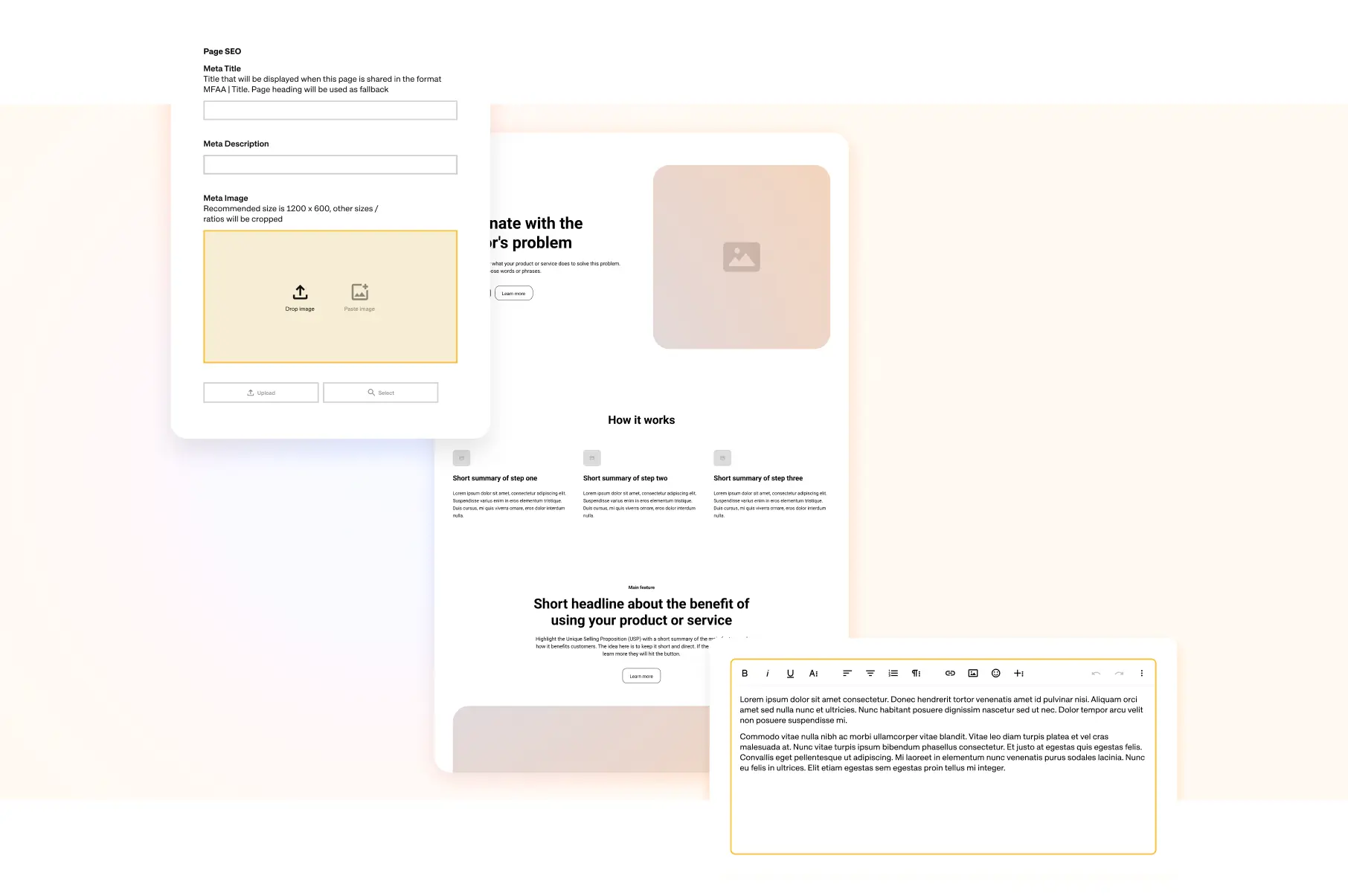Transform your content management with structured content
Forget the typical linear customer journey from awareness to consideration to purchase. Today's customer journey is a maze of countless digital twists and turns. With multiple devices, platforms and channels to publish content to, crafting cohesive digital experiences is more complicated than ever. Enter structured content, a powerful approach to taming content chaos and unlocking its potential.
Structured content enables organisations to plan holistically, crafting a seamless user experience across every touchpoint. Its benefits include allowing for reuse across platforms, the ability to tailor content to customer attributes, preferences and behaviours and improved optimisation.
Create once and publish everywhere
Structured content turns typical content management on its head. Usually, content managers update content on one specific website page or for one specific online location. Structured content, though, allows you to update one ‘piece’ of content that can be published to multiple locations. It’s often called the Create Once, Publish Everywhere (COPE) method.
So what exactly IS structured content? It’s content that’s been broken down into modular, reusable ‘pieces’ or components, intelligently tagged with metadata. Each content component can be grouped together to make up a content type such as a news article or an ecommerce product page. This way of organising your digital content, usually in your content management system (CMS), allows you to deliver content consistently across different devices, platforms and even languages.
Let’s use product descriptions as an example of structured content. All the information that goes into a product description can be made up of separate components, such as the product name, image, price, description, rating and reviews. These components can be easily reused and repurposed across different channels and platforms. Not only can they be included with a product description on a website product page, but they could display on Google search results as rich snippets and be published to different social media channels.

Structured content and the Sanity CMS - a winning combination
To create and manage structured content, you need a type of CMS called a headless CMS. It separates the presentation layer (where content is presented online) from the backend (where content is managed). The capacity a headless CMS gives you to create and update content in a single location is the best way to ensure scalability.
At Pollen, we use Sanity, a highly regarded headless CMS. It’s a powerful, flexible tool for managing structured content, with features specifically designed for this purpose. Sanity offers a flexible and intuitive schema editor that allows you to create custom content models. It also supports real-time collaboration, making it easy for teams to work together on creating, updating, proofing, testing and publishing content.

We love its developer-friendly API and flexible integration options that make it easy to use with other tools and platforms. These include:
- Open source: Sanity is an open source platform, which means that there is a large community of developers who are working on integrations.
- Extensible: Sanity is an extensible platform, which means that you can create your own integrations.
- Secure: Sanity is a secure platform, which means that your data is safe.
- Scalable: Sanity is a scalable platform, which means that you can grow your business without having to worry about changing your CMS as your business grows and evolves over time. As your content and digital presence grows and evolves, the CMS will still work quickly and smoothly.
Unlocking the potential of structured content for two very different websites
We built Mud Australia and Grain Growers with Sanity, two very different websites that are perfectly supported by Sanity’s features. Whether it’s curating products into compelling collections or targeting different content types to a very diverse range of target audiences, both companies are equipped to achieve their unique content objectives.

How to structure your content with a content model
Creating content for a headless CMS requires a different way of thinking about your digital content. We set you up to successfully manage your content with Sanity by involving you throughout the content planning and preparation process. We start with developing a content model, which involves defining the types of content you want to create, the metadata you want to associate with each type of content and the relationships between different types of content. The typical steps we take to prepare the content model are to:
- Identify content components: We start by breaking down your content into its individual components such as text, images, videos, audio and metadata. Each component should be a standalone entity that can be used independently.
- Define content types: After identifying your content components, we define the different types of content that your website or application will need. For example, you might have blog posts, product descriptions, testimonials and case studies.
- Create content models: The first two steps give us the details we need to create the content model, a blueprint that defines the structure, format, and rules for each type of content.
Structured content: The best solution for large, complex content ecosystems
Structured content is a powerful, robust option for helping you manage complexity - whatever that might be. From large content ecosystems with multiple distribution channels to extensive product catalogues on ecommerce platforms, and from growth strategies to omnichannel content marketing strategies, structured content makes it all easier to manage. If you’d like to learn more about how structured content can streamline your content management processes and provide engaging, personalised experiences for your customers, contact us today.
